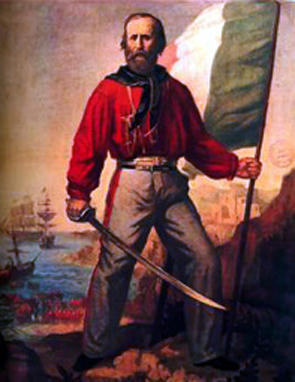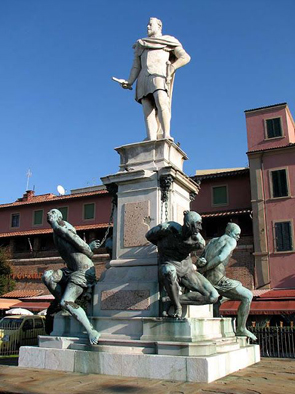The novel I’m reviewing is G. by John Berger. It won the Booker Prize in 1972. I was planning to read it on a train as I travelled to Sydney the other day from the Blue Mountains where I live. The only remaining seats were next to other people, so I chose one and pulled out my book.
It was some years ago, now, that I discovered that reading, while an act essentially undertaken in private, has also the potential to resonate in the public space. Apart from the annoying man who once decided to attempt to strike up a conversation in a train because I looked bored (Ahh! … I was reading!) there have been less benign encounters. I once had a guy sitting next to me turn and become aggressive when I started to read next to him. I thought I was better than him because I was reading, he told me, and the encounter very quickly threatened to become a physical assault. I have also had a woman abuse me on a train station when she discovered that I was reading Richard Dawkins’s The God Delusion. I was going to hell, she was happy to inform me, possibly in a handbasket I mentally added.
This week when I chose my seat on the train I found myself next to an attractive young woman who was (thankfully, it turned out) engrossed in her phone. As I read G. I turned the page and was confronted by this image:

It’s no more than a childish drawing, I admit, but even so, for a moment I panicked. Did she see it? Would she think I was some perv trying to be suggestive? The thing was, I had an hour and a quarter train trip to fill, so I didn’t want to put my book away. Instead, I sat there with the book turned against her seeing it with my hand strategically placed against the possibility that anyone else might view the image, either, until I could, thankfully, turn the page. I moved seats as soon as I could.
The thing about this crude drawing (I mean “crude” as basic and unadorned, as opposed to the pejorative sense of the word) is that it transcends language. G. reflects in the middle of his affair with Camilla that, When you describe something, when you name it, you separate it from yourself.
The drawing represents the formative moment of G.’s first sexual encounter with his cousin and guardian, Beatrice. The novel’s intrusive narrator tells us:
The distinction between first and repeated experience is that one represents all: but two, three, four, five, six, seven ad infinitum cannot. First experiences are discoveries of original meaning which the language of later experience lacks the power to express.
In other words, G.’s first sexual encounter is likened to a kind of prelapsarian sexual world (this may seem incongruous to some) in which language (the universal signifier of social convention and the ordering of the individual experience) has not intruded upon the private and sensual. In Beatrice’s estimation, their act shows they are separate from the world which would otherwise constrain them through “compromised and flabby usage”. The importance of the drawings, according to the narrator, “is that they carry a minimal cultural load.” In an argument that seems to follow Lacan, the narrator invites his reader to imagine the word “big” in front of the first image or a woman’s name in front of the second. In either instance the wording has the effect of particularising, thereby suggesting, for instance in the second drawing if a name were applied, “Beatrice [who] is part of an historical European culture”. However, Beatrice insists the world can only pretend to be a part of them. It’s a distinction John Fowles makes in his own writings, between the natural world from which we are separated through the human agencies of language and classification. But sexuality is governed by cultural norms and institutions like religion and marriage, nevertheless, and G. is not immune to that reality.
Berger traces G.’s sexual maturation from his first prepubescent fantasies about his governess Miss Helen, through to the outbreak of World War I and Italy’s declaration of war against Austria-Hungary in May 1915. G. is a sensualist who knows how to catch a woman’s eye and how to seduce them. He likens himself to Don Juan, focussing mainly on married women.
But like my experience on the train – my private moment of unadorned reading pleasure soon threatened by public exposure – G.’s sexual proclivities exist in a world of both personal and political consequence. Instead of simply offering a series of ever more lurid episodes, Berger’s novel makes associations between the patriarchal power within a marriage and within wider society and history. To this end, while Berger’s novel is to some degree experimental, it adheres to the Realist tendency to represent the wider world within the private microcosm.
For instance, each of G.’s conquests in the novel are contemporaneous with key historical moments: his desire for the unnamed girl who saves him during the 1898 food riots in Italy; his seduction of Leonie during the first flight across the Alps by Geo Chavez and his pursuit of Marika in Trieste’s upper social echelons, even as war looms ever closer. I think it is not by accident that G.'s single-letter acronym connects him to his historical context. Jorge Chavez is known by the sobriquet “Geo” and is a close friend of G.'s. At school G. is called “Garibaldi”, after the Italian nationalist who helped unify Italy in the latter half of the 19th century.
The private lives of women and their husbands - and G.'s intercession in those marriages - also resonate in their wider historical context. A woman’s married status potentially has a wider-world correlation to the repression of social classes. G’s father, Umberto, for instance has taken a mistress, Laura, as a remedy to his too spiritual marriage with Esther. When Umberto insists that Laura must live in Italy so he may see his son, Laura realises her jeopardy: “We would be outcasts. A woman who is not married with an illegitimate child.” The novel makes the point over and over that women exist within the male sphere and that their identity is achieved through their relationships with men and the male gaze. It’s a point that echoes arguments in Berger’s Ways of Seeing: a woman’s understanding of her own identity is formed through her awareness of herself as both “surveyor” and “surveyed”, since self-perception rests on how she is perceived through men who have power over her. Women in this novel are aware of their status as possessions, from Camille whose husband is willing to kill G. in order to preserve his own honour, to Marika who understands that her status and identity are tied entirely to her husband:
She knew that she lived under licence and she knew that it was too late for her to live otherwise. It was not something she reasoned about, but she sensed it as one can sense the size of a plain or the proximity of the sea without being able to see them. Without a Wolfgang, she would become like a gipsy, and she despised gipsies.
To this extent G. has feminist overtones. Women are duplicitous in G., since their identity is firstly bifurcated by this double perception of themselves being watched and watching being watched. Then, added to that is the dilemma each woman faces when confronted with the romantic opportunities G. offers. To remain with their husbands is safe and socially acceptable, but anathema to their identity as an independent person. Accepting the freedom G. offers is frightening but also liberating.
The so-called duplicity of woman was the result of the monolithic dominance of man
- G., page 150
On the wider social stage, the lot of women and their rebellions in marriage find their equivalents in the various uprisings and resistance movements throughout the novel. Umberto, G.’s father, a merchant comfortable with his lot in life, is bothered by the teppisti – the thugs and hooligans as he calls them – that advocate a madness
that threatens his comfort in the name of social and economic equality. One of the most striking images in the novel is the statue of Ferdinand I in Livorno, Italy, which is encircled by four black slaves chained to the main statue. It is a statement not only of the status quo, but also the means by which it is achieved. It’s a story that plays out over and over in the novel, from the account of the hungry workers cut down in the Bava-Beccaris massacre of 1896 to the irredentists in Trieste who rail against their Italian overlords.
The social division is also imagined as a schism between young and old and therefore between the old world and a new emerging world. Jocelyn, Beatrice’s brother, is a young man with an old man’s pretensions. He has inherited a life that has become an anachronism. He represents the increasingly irrelevant upper classes, now forced to transform their life of purpose and authority into a theatre that maintains the trappings of class, while industrial capitalism transforms the world of the working classes and presses the need for greater democratic representation. This social divide is represented skilfully through the symbol of the horse. For the upper classes the horse is a stage prop in their play of genteel old-world power and privilege. Fox hunting, after all, is the purview of the rich. For the poor the horse is an instrument of oppression:
A line of cavalry approaches. The nearest horse rears above a huddled group. The boy has never as yet seen from the ground a horse used as a weapon … The rider’s violence has distorted its nature.
When G. comes across two poachers in the woods he is asked to watch a bizarre act. Some horses lie already dead upon the ground but G. is told to watch as the man pretends to kill them in front of him. “Don’t ever forget what you saw me do” he tells G. G., as a member of a privileged class, has been shown the tenuous hold the rich have on their trappings of power.
However, G. lives his life neither affirming or denying his ties to class. Instead, he follows a course he naively believes is apolitical. He can either accept his life as it is, as Jocelyn has done, or strike out more adventurously. G. chooses his friend, Chavez, who becomes the first person to fly across the Alps, as a model. Unfortunately, Chavez crashes his plane on landing, breaking both his legs and eventually dying. Chavez knows, as does G., that there is a choice between accepting life as it is and risking a hero’s death. When Chavez dies from his injuries G. reflects, “Achievements are never easy. There is a price to pay for daring. The true heroes are dead ones. When what is desired is immoderate, it lies beyond death.” The narrator further reflects:
Their elders looked back on their lives, gently, tenderly, as they might look at their own children, trying to find in them proof that a certain kind of cunning and a certain kind of modesty offer the best means for tricking and coaxing the best out of life: life which, when all is said and done, is better than being dead … The young among the crowd celebrated the heroism of early death; their elders recalled the price of survival.
To this end, G.’s hedonism represents his daring nature as well as something of a latent revolutionary bent. It is no accident that the narrative lands him in hospital only two beds away from his hero, Chavez, before he dies, or that the devastating conclusion of the novel draws G. into his historical moment, much to his surprise. In his undermining of privileged marriages, of liberating women repressed by their husbands, his exploits also represent the various disruptive political movements in the novel. But this is not to say that G. is some kind of romantic Robin Hood. Camille’s hopes for a future with G. are also symbolically linked to the future Chavez’s achievement seems to offer society. Yet G. also reveals a level of opportunism in his character, not to mention baser motivations like revenge against husbands, which also potentially tear down the women he has loved:
He made his plans quickly. He would go to Paris, visit the Hennequins, make a point of ignoring Camille, reassure the husband and would quickly begin an obvious, public affair with Mathilde de Diraison. In this way he would avenge himself on Hennequin by making the whole shooting incident appear ridiculous, a question of doubtful flirtation on the part of his wife . . . He would see to it that the affair was as brief as possible and afterwards he would disappear from their circle.
G. is written as a series of episodes in G.’s life, each of which draws the reader into a new experience. Coupled with this is Berger’s tendency to intrude upon the narrative, sometimes as a character who appears to live in our modern world. It’s an interesting device since time becomes a factor in the idea of class oppression in the novel. “Every ruling class needs to numb and, if possible, to kill the time-sense of those whom it exploits by proposing a continuous present,” his narrator explains. When Beatrice begins to gain a sense of the wrongness of her world’s political and class structures, it remains inexplicable to her, but Berger’s narrative voice intrudes to explain her confusion: “In certain respects we are likely to be better understood by those who follow us than by ourselves.” At times Berger breaks the pretence of fiction entirely with metanarrative episodes more likened to essays on sexuality and history than a conventional narrative might allow. He uses this not only as a commentary on the story, but as a means of initially disorientating the reader and then reorienting them as G.’s story continues in different times and places, and as he develops his sensualist agenda. The narrative voice is also important because even in the story’s most private scenes of intimacy, this is a novel about history and politics, too.
In the end, what I found interesting about this novel was its representation of the individual caught in the sweep of history. In his essay (commentary? Diatribe? - call it what you will) that ends War and Peace, Tolstoy, in attempting to tear down Napoleon’s reputation, argues that no individual can claim to direct the course of a battle once it has started, let alone the powerful currents of history. It is an argument that applies to many of the characters in Berger’s novel, from the upper classes who seek to maintain their privileges, to husbands who would control their wives, to men who risk it all in great deeds of daring or rebellion. G. stands apart from this, believing history has nothing to do with him. But this is where Berger differs from Tolstoy. G. may believe he has nothing to do with politics, but he finds that a personal life is not separate from the wider world. Even if an individual does not direct the course of history on their own, from seducing a woman to reading a book on a train, it seems, all we do has potentially some bearing - in some way reflects - the wider world in which we live, and others are taking notice. This was a fascinating book.

 RSS Feed
RSS Feed Facebook
Facebook Instagram
Instagram YouTube
YouTube Subscribe to our Newsletter
Subscribe to our Newsletter





